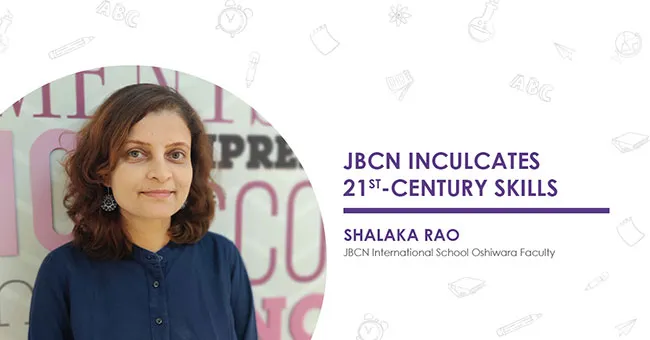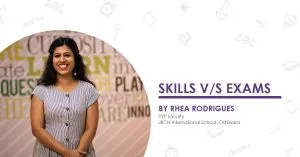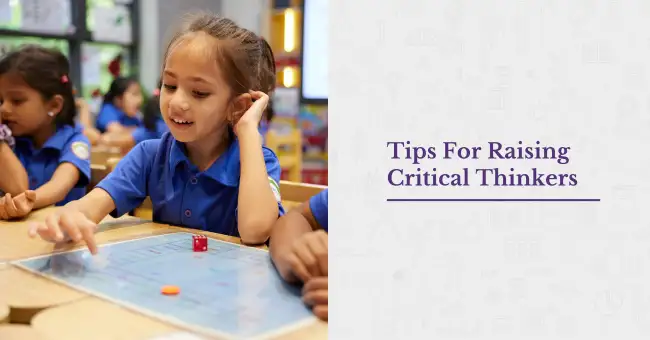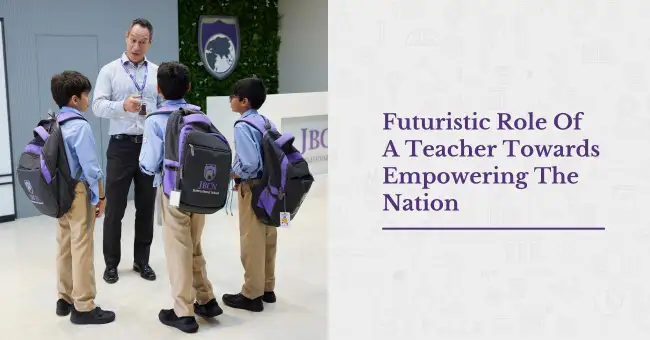
Does this scenario sound familiar? Are you constantly thinking of ways to engage him/her constructively?
Well, here are some tips and ways that will keep the young minds thoroughly engaged while helping in their cognitive development. Parents are always looking for ways to foster bonding and what better way to do that than playing mind games which will activate your child’s grey matter?
A famous quote by the renowned educationist Maria Monterssori makes it eminently clear that when children are encouraged to look around them “making use of all that he finds around him, shapes himself for the future.” Thus, we learn that indulging in activities that allow children to use their senses, further allows them to develop and foster a clearer logical and analytical rationale.
The quality of a child’s experiences in the first few years of life – positive or negative – helps shape how their brain develops. Each child is born with their own individuality, but brain development can also be heavily influenced by external factors and aspects. What we understand about Nature vs. Nurture is that while genes are inherited, the environmental factors influence cognitive development. Intelligence is now understood to be the result of some combination of both nature and nurture.
For optimal brain development, it is ideal for parents and teachers to foster elements of both nature and nurture both at home as well as at school.
From birth to age 5, a child’s brain develops faster than at any other time in life. The connections needed for many important, higher-level abilities like motivation, self-regulation, problem solving and communication are formed either in these early years – or not formed at all.
Although memory is not fully developed in infancy, the early childhood period (birth through age 8) is important in building and acquiring the development of memory. Understanding the development of memory provides a new way to plan activities and seek out strategies to enhance memory skills which aid them throughout their lives.
Drawing from my personal experience of being a mom to a 14-year old and a preschool educator for the last decade, here are some of the best games and activities that I have successfully used both at home and in school to support and enhance cognitive development.
1. Memory Match
 Matching picture cards is a classic game. It relies on memory recall and the winner is the one who remembers where the cards are and have the maximum pairs.
Matching picture cards is a classic game. It relies on memory recall and the winner is the one who remembers where the cards are and have the maximum pairs.Right from the time, my little girl was two, she was quite familiar with concepts such as animals and their young ones; animals and their homes, and so we started playing memory games. On one side we would place the cards with animal pictures upside down. On the other side pictures of animal homes/ their young ones/ their choice of food cards would be placed upside down. She had to find the right pair remembering the card which she picked on her turn as well as mine. What a fun way to sharpen memory and enhance recall!
This was later extended to other concepts too, like good habits, things that go together, etc. A memory match game is one that can be easily played in preschool too.
2.WHAT’S MISSING?/ Drawing From Memory (Visual/Auditory/Tactile)
Place a number of household items onto a tray (the more items, the more challenging the game so for younger children start with just 3-4 items and increase from there).Tell your child to have a close look at the items on the tray. Name them together (the more you discuss the items the more likely your child is to remember them so you could ask them what colour or shape each item is or what it is used for).
Cover the items with a towel. Ask your child to close their eyes and as they do so remove one item from under the cloth. Ask them to open their eyes, remove the cloth and tell you what’s missing! Alternatively, ask them to list the items.
This game activates visual memory and is ideal for visual learners. It can be modified for auditory learners where instead of the items being displayed, you name the items/words The learner has to listen attentively and recall as many (in the same order to make it more challenging).
For kinesthetic learners, it can be modified by passing objects (in each one hand) in a circle and feeling each object and subsequently agreeing on a common name and finally recalling and listing all the objects.
3. Solving Puzzles
This is a good exercise for the mind as children are engaged in putting together the pieces of a puzzle to form the big picture. Starting from a 4-6 pc puzzle for a Nursery learner moving to an 8-10 & then 10-12 pc puzzle, increase the challenge gradually. Don't be surprised when one fine day your child has cracked a 30 pc or bigger puzzle.Apart from picture puzzles, I have personally used puzzles of opposites, homonyms, things that go together etc initially to find the right pair and later as a memory match. Puzzles like What's next, What's missing, What's different provide scope for thinking.
These puzzles can also be made by the teacher and used in class.
4. Bonding Over Board Games
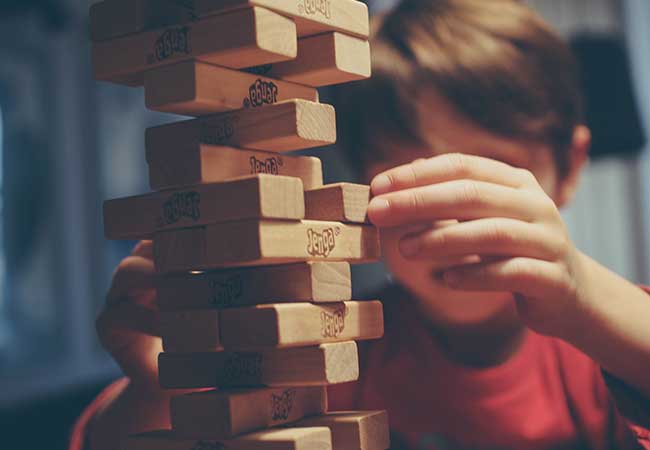 When my little girl was 4 -6 years, we would spend every afternoon playing board games. I would always be on the watch to add to her collection of educational games. Some of my all time favourites are Candyland, Mastermind, Plot/ Connect 4, Chinese Checkers, Guess Who, Monopoly, Kids on Stage, Colour track, Ludo, Scrabble, Cluedo and many more
When my little girl was 4 -6 years, we would spend every afternoon playing board games. I would always be on the watch to add to her collection of educational games. Some of my all time favourites are Candyland, Mastermind, Plot/ Connect 4, Chinese Checkers, Guess Who, Monopoly, Kids on Stage, Colour track, Ludo, Scrabble, Cluedo and many moreApart from spending quality time with your little one, these games build on life skills like critical thinking and problem solving, logical thinking, creative thinking, analytical skills, listening skills, etc.
For eg when you play Connect Four, it encourages players to plan ahead – looking out for opportunities to connect 4 discs. It also provides an opportunity to detect patterns. It instigates the prediction of the outcome of an alternative move.
While playing Chinese Checkers children learn how to strategize each move to reach your nine counters to the opposite side before any other player does.
Guess who is a game of elimination by description. You need to ask the right questions to be the first one to guess the right character. This can also be played as a classroom game. The children have to use good listening skills and work collaboratively.
Mastermind is a tool to help students develop logic skills, design effective experiments, and discuss scientific reasoning in the classroom or lab.
There are various board games which we have played in class too with variations like tic tac toe of sight words, sight word snakes and ladders, ludo of CVC words etc.
The benefits of playing board games are many! However, the top four benefits that I can think of are, increase in analytical thinking, developing and enhancing problem solving abilities, sharpening their memory and above all, learning key life lessons, such as, winning and losing is all part of the game.
5. On The Move Games To Improve Memory
While I'm out in the car or in the park, I find it the perfect time for playing games like I Spy and memory games like names of animals/ flowers/ birds/ ATLAS game for places etc.Children have to name something which hasn't been named earlier by any of the others. They also have to repeat what was named earlier adding onto the list. This builds their knowledge as well as memory power.
Tic tac toe is another game that can be played. It helps children apply their logic and develop a strategy at an early age.
As they grow around the age of 6 a classic game which most of us have played in our childhood days, Name, Place, Animal and Thing can be introduced.
In the later years, What's the good word or Guess the personality in 20 Questions may hold their interest.
6. Rewiring Brains With Brain Games
Brain games improve memory and cognitive function. Classic Brain games that keep the mind active:Brainvita, Rubik's cube, Rubik's Race, Chess, Lego- blocks, architecture, Tangram, Electro board game- matching countries and flags
7. Stretch Thinking With Word Games -
 Word games (and puzzles, board games, and the like) grab our attention, get us to make new connections, and give us the chance to think outside of our mind's box.
Word games (and puzzles, board games, and the like) grab our attention, get us to make new connections, and give us the chance to think outside of our mind's box.Word search, Crossword puzzle, Unscrambling words, Riddles, Scrabble, Boggle, Hangman, Taboo
These games activate parts of the brain that deal with language and word finding, which forces the brain to exercise, work and be active.
At school as well, we use most of these to enrich learner-experience.
8. Embracing Technology
There is a plethora of online educational games I believe that technology cannot replace the teacher but can accentuate teaching/ Learning, but, why not save a few memory games and educational games related to the concepts? My pick is Kahoot for quizzes.In Preschool, children learn the play way method. It would be ideal to include mind games which make learning enjoyable as well as activate thinking. These can be integrated in the lesson plan.
In class, we use Manipulatives like logico piccolo, Funthinkers match frame, clever-cube games.
We include activities like Maze chase, finding the odd one out, Spot the difference, treasure/ scavenger hunt, Intertable quiz.
The list of games and activities is endless. What's important is to keep the young minds ignited. It's all about how creative one can be and share this creativity in ways to boost our little one's creativity and cognition in turn.
Ms. Muskaan Madnani - Pre-Primary
Senior Year Leader
JBCN International School, Oshiwara
Citations:
- The Absorbent Mind - Maria Montessori
- Brain Development
- Economics And The Debate On Nature Vs. Nurture
- Favourite Educational Games Pins
- Board Games For Developing Thinking Abilities And Life Skills
- Surprising Benefits Your Kids Get From Playing Board Games
- Playing Board Games May Help Protect Thinking Skills In Old Age
- 8 Best Educational Apps For Toddlers
- 4 Amazing Benefits Of Playing Chinese Checkers

